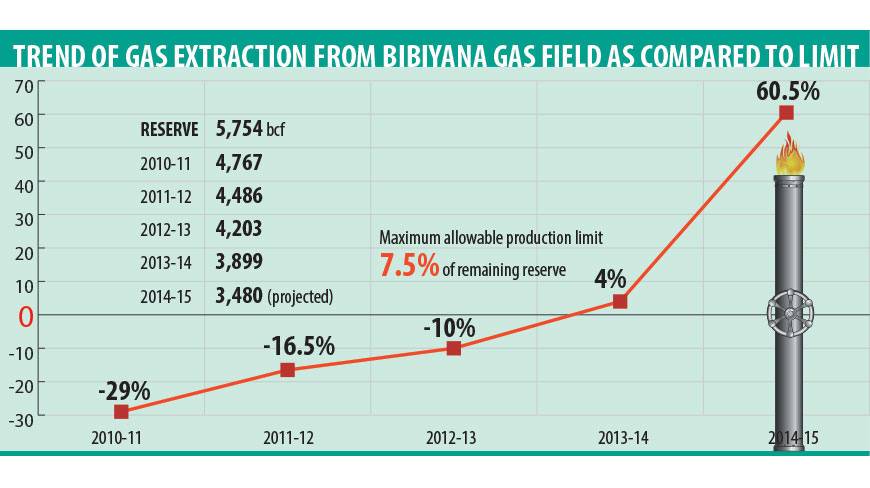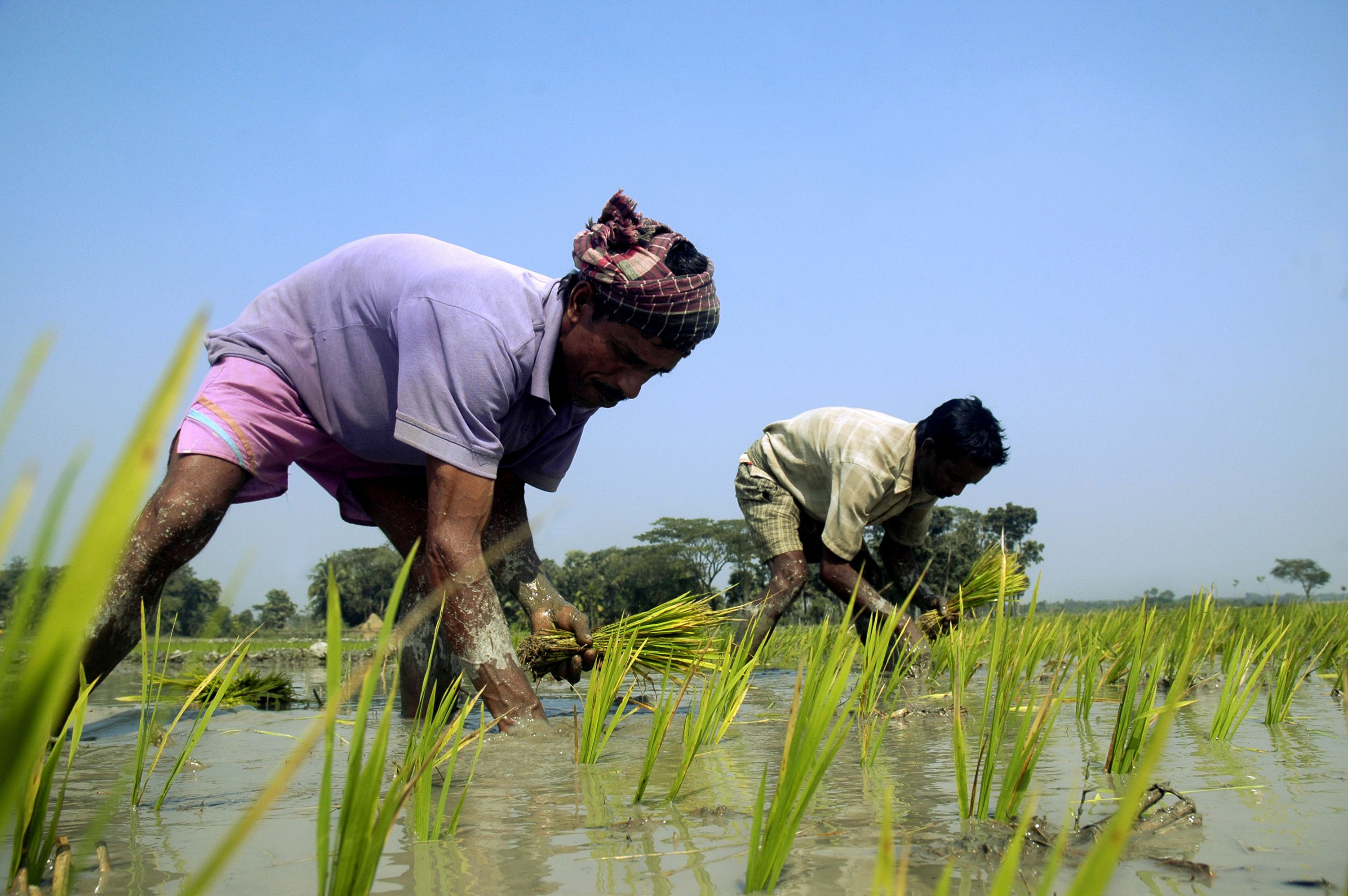The pressure in the wells at the country’s top gas field which supplies the lion’s share of gas to the national grid has plummeted because of over-production.
The well-head pressure in most wells at Bibiyana gas field has dropped by an average of between 1,050 pounds per square inch (psi) and 1,400 psi, down from a pressure of over 3,000 psi when the field began operating.
Experts say over-production of gas could damage the field’s internal structure and cause the premature death of the gas field, as happened with Sangu gas field.
According to the data, if Chevron continues to extract at the level it has been this year, it will produce 60.53% more gas per year than the maximum allowed by the Production Sharing Contract (PSC).
According to the PSC, a company should not produce more than 7.5% of the proven and provable reserve of gas in a year. Usually 6.5 percent should be extracted. An extraction rate of over 7.5% can put the structure at risk.
Since the estimated remaining reserve at Bibiyana field is 3.4 TCF, annual production should not exceed 261 billion cubic feet (bcf), which translates into a daily production rate of 715 million cubic feet per day (mmcfd).
In January 2015, the company announced that it would produce 1,200 mmcfd. Production occasionally exceeds this amount.
“We have asked Chevron officially not to extract over 1,200 mmcfd. But they are not observing this limit,” Petrobangla Director (PSC) Md Quamruzzaman told the Dhaka Tribune.
Professor Badrul Imam of Dhaka University’s geology department said: “I think that gas is now being overproduced at Bibiyana field. Too much pressure on Bibiyana could damage the natural structure and lead to a Sangu-type situation.”
Bibiyana supplies a major portion of gas that goes to the national grid; supply problems pose a serious threat to the country’s energy security.
“A technical glitch at Bibiyana will result in a gas blackout in the country. I think Chevron should not be allowed to further increase gas output from Bibiyana,” Quamruzzaman said.
A low well-head pressure means gas extraction is becoming increasingly difficult.
Chevron has urged Petrobangla to allow it to install a gas compressor station at Bibiyana field to increase the volume of gas extraction.
The company claims a compressor will increase the field’s lifespan.
“We are very concerned about the matter,” Petrobangla Chairman Istiaque Ahmad told the Dhaka Tribune.
The country is already in a tight situation because the supply of gas across the country is expected to start deteriorating from 2018, including at Bibiyana gas field. Over-production is feared to compound the crisis.
US-based Chevron Corporation operates Bibiyana gas field located under block 12 in the country’s north-eastern region.
In February, the international oil major said the field held a reserve of over 7.2 trillion cubic feet (TCF) of gas, according to a Petroblangla official, who asked not to be named.
In Chevron’s first assessment report on the gas field submitted to Petrobangla in 2000, the field was assessed to hold a reserve of over 2.4 TCF. In 2008, the field’s reserve was reassessed to over 5.7 TCF.
Several Petrobangla officials expressed concern that Chevron might use its revised reserve claims to justify increased extraction, thereby depleting the field’s reserves.
In its report, Chevron said it would be able to supply about 1,400 mmcfd, an increase over the current supply of 1,250 mmcfd, by the end of 2015.
The production rate has already increased by over 350 mmcfd over the past five months from 900 mmcfd in November 2014.
The Petrobangla official said sand was being emitted by some wells at Bibiyana field because of the high gas extraction rate.
The field has experienced interruptions in production four times late last year and early this year.
Shaikh Jahidur Rahman, communication manager (external affairs) of Chevron Bangladesh, denied that well-head pressure had anything to do with problems with production. “A decline in gas pressure was not responsible for any of the production shutdowns.”
Cairn Energy, the then operator of Sangu gas field in the Bay of Bengal, had increased gas extraction to about 220 mmcfd in 2002 from 60 mmcfd in 1999 after the company said it found an extra trillion cubic feet of gas in its reassessment of the reserve.
The country’s first offshore gas field, Sangu was shut down permanently in October, 2013 after its reserves were severely depleted.
Chevron’s communication manager said: “Chevron’s global practice and the confidentiality clause of the Production Sharing Contract both preclude us from disclosing reserves of our gas fields to the public.”
Source: Dhaka Tribune










